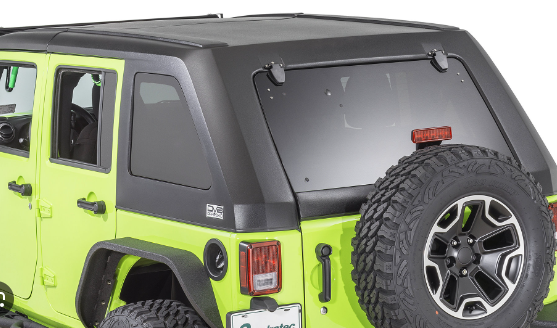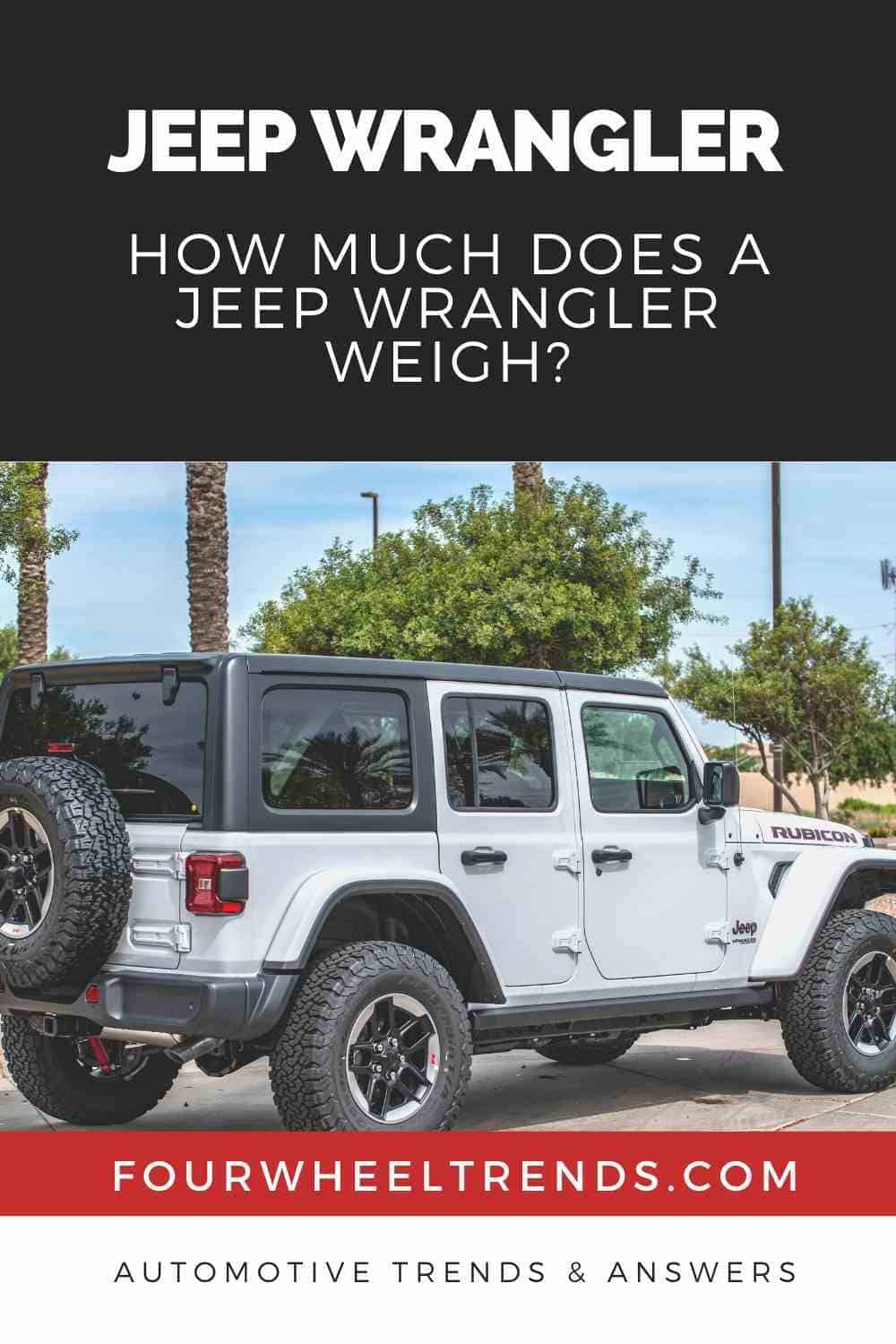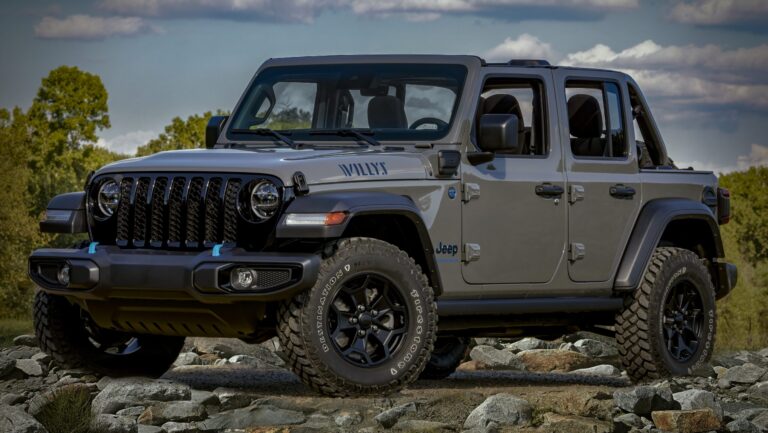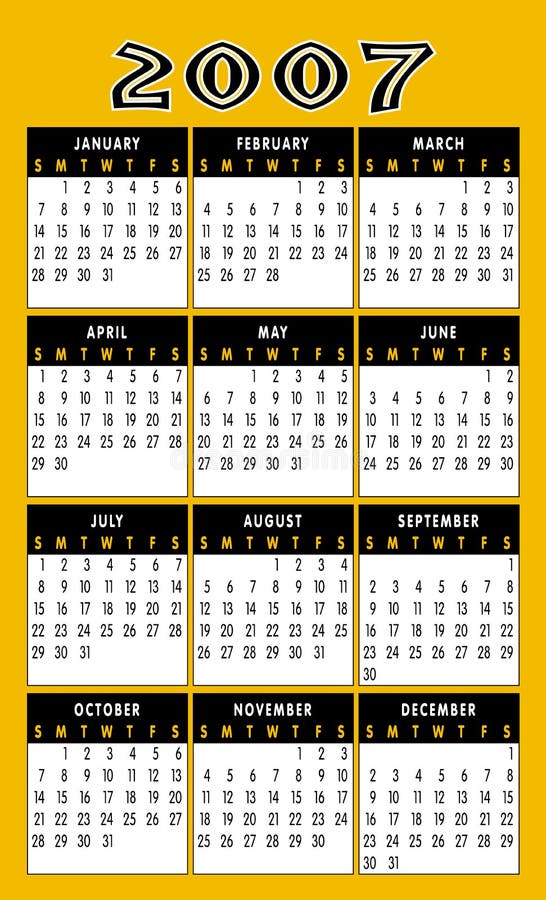How Much Does A 2018 Jeep Wrangler Weigh?
How Much Does A 2018 Jeep Wrangler Weigh? jeeps.truckstrend.com
The 2018 Jeep Wrangler, marking the debut of the highly anticipated JL generation, is an iconic vehicle renowned for its off-road prowess, rugged charm, and open-air freedom. For any owner or prospective buyer, understanding the vehicle’s weight is far more than a mere curiosity; it’s a critical piece of information that impacts everything from fuel economy and handling dynamics to towing capacity, off-road performance, and even legal compliance. The weight of your 2018 Jeep Wrangler isn’t a single, fixed number but rather a range that varies significantly based on its specific configuration. Delving into these nuances helps you make informed decisions, whether you’re planning modifications, calculating payload, or simply understanding your vehicle’s capabilities.
Understanding Key Vehicle Weight Terminology
How Much Does A 2018 Jeep Wrangler Weigh?
Before we dive into the specific figures for the 2018 Jeep Wrangler, it’s essential to grasp the various weight-related terms used in the automotive world. These definitions are fundamental to understanding your vehicle’s capabilities and limitations.
- Curb Weight: This is perhaps the most commonly cited weight figure. Curb weight refers to the total weight of a vehicle with all its standard equipment, fluids (like engine oil, coolant, and a full tank of fuel), but without passengers or cargo. It represents the vehicle’s "ready-to-drive" weight from the factory.
- Gross Vehicle Weight Rating (GVWR): The GVWR is the maximum permissible total weight of your fully loaded vehicle, including the vehicle itself, all occupants, cargo, and any accessories. This is a crucial safety rating set by the manufacturer, and exceeding it can compromise handling, braking, and suspension components, potentially leading to dangerous situations or voiding warranties.
- Payload Capacity: Directly related to GVWR, payload capacity is the maximum amount of weight (including passengers, cargo, and any added accessories) that your vehicle can safely carry. It is calculated by subtracting the vehicle’s curb weight from its GVWR. For example, if your Wrangler has a GVWR of 5,500 lbs and a curb weight of 4,500 lbs, its payload capacity is 1,000 lbs.
- Gross Axle Weight Rating (GAWR): This indicates the maximum weight that can be safely supported by each individual axle (front and rear) of the vehicle.
- Gross Combined Weight Rating (GCWR): If you plan to tow, the GCWR is vital. It represents the maximum allowable combined weight of the fully loaded vehicle (including passengers and cargo) and its attached trailer, including the trailer’s cargo. Exceeding the GCWR can strain the drivetrain, brakes, and chassis.
![]()
Factors Influencing a 2018 Jeep Wrangler’s Weight
The 2018 Jeep Wrangler’s weight can fluctuate significantly due to several key factors. The JL generation brought a focus on weight reduction through the use of lighter materials like aluminum for doors, hinges, hood, fenders, and the windshield frame, as well as magnesium for the tailgate. Despite these efforts, the sheer number of configurations still leads to a wide range of weights.
-
Body Style: 2-Door vs. 4-Door (Unlimited)

This is, by far, the most significant determinant of a Wrangler’s weight. The 4-door Unlimited models are substantially longer and typically heavier than their 2-door counterparts due to the added chassis length, extra doors, and increased interior volume. -
Engine Type
The 2018 JL Wrangler offered two engine options: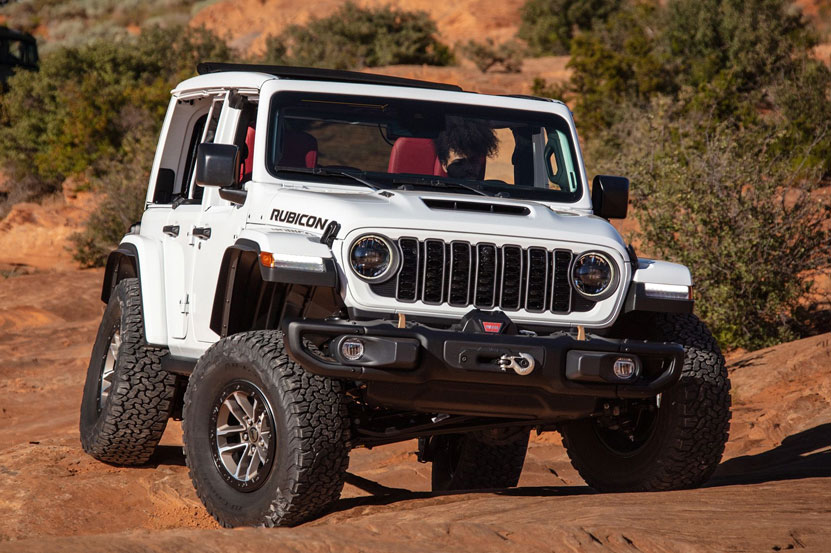
- 3.6L Pentastar V6: The tried-and-true naturally aspirated V6.
- 2.0L Turbo Inline-4 (eTorque Mild-Hybrid System): This newer, turbocharged engine with mild-hybrid assist is generally lighter than the V6, contributing to a slightly lower curb weight for models equipped with it.
-
Transmission Type
While the difference is minor, the transmission can also play a small role. Manual transmissions are typically marginally lighter than their automatic counterparts. -
Trim Level
The trim level significantly impacts weight due to varying standard equipment:- Sport/Sport S: These are the base models, generally the lightest as they have fewer standard features and less heavy-duty equipment.
- Sahara: Often includes more creature comforts, larger wheels, and potentially heavier interior materials or technology packages, adding some weight.
- Rubicon: Designed for extreme off-roading, the Rubicon is typically the heaviest trim level. It comes standard with heavy-duty Dana 44 axles, larger off-road tires, rock rails, electronic sway bar disconnect, and locking differentials, all of which add substantial mass.
-
Roof Configuration
- Soft Top: The lightest option, offering maximum open-air experience.
- Hard Top (Freedom Top): The three-piece modular hardtop adds considerable weight compared to the soft top. It’s often chosen for security, noise reduction, and better insulation.
-
Optional Features and Packages
Beyond trim levels, individual options can pile on the pounds:- Larger Wheels and Tires: Heavier than standard options.
- Premium Audio Systems: Extra speakers, subwoofers, and amplifiers add weight.
- Auxiliary Switches and Wiring: For future accessories.
- Heavy-Duty Bumpers, Winches, Skid Plates, and Rock Sliders (Aftermarket): These popular modifications can significantly increase the vehicle’s curb weight, impacting performance and payload.
- Lift Kits and Larger Suspension Components: While some components might be lighter, heavy-duty springs and shocks can add weight.
Specific Weight Ranges for 2018 Jeep Wrangler Models
Given the numerous configurations, providing a single weight for a 2018 Jeep Wrangler is impossible. However, we can offer approximate ranges for curb weight based on body style and trim:
-
2-Door 2018 Jeep Wrangler (JL):
- Curb Weight: Approximately 3,950 lbs (1,790 kg) to 4,150 lbs (1,880 kg)
- Lighter end: Sport with 2.0L engine, manual transmission, soft top.
- Heavier end: Rubicon with 3.6L engine, automatic transmission, hardtop.
-
4-Door 2018 Jeep Wrangler Unlimited (JL):
- Curb Weight: Approximately 4,160 lbs (1,887 kg) to 4,400 lbs (1,995 kg)
- Lighter end: Sport Unlimited with 2.0L engine, manual transmission, soft top.
- Heavier end: Rubicon Unlimited with 3.6L engine, automatic transmission, hardtop, and optional packages.
Why Knowing Your Wrangler’s Weight Matters
Understanding your 2018 Jeep Wrangler’s weight is crucial for several practical reasons:
- Performance and Fuel Economy: Heavier vehicles require more energy to accelerate and stop, leading to reduced fuel efficiency and potentially slower acceleration and longer braking distances.
- Towing and Hauling Capacity: Knowing your GVWR, GCWR, and payload capacity is paramount for safe towing and hauling. Exceeding these limits can lead to accidents, component failure, and legal penalties.
- Off-Roading Dynamics: Weight distribution, overall weight, and the center of gravity significantly impact off-road performance. A heavier vehicle might struggle more in soft sand or mud, be more prone to rollovers on steep inclines, or require more robust recovery gear.
- Tire Selection: Tires have load ratings that must match or exceed your vehicle’s weight and intended load. Using under-rated tires is a safety hazard.
- Suspension and Aftermarket Modifications: If you plan to add heavy aftermarket bumpers, winches, or armor, you must consider the cumulative weight. This added weight necessitates appropriate suspension upgrades (heavier springs, shocks) to maintain proper ride height, handling, and prevent premature wear.
- Vehicle Registration and Insurance: In some jurisdictions, vehicle weight can influence registration fees or insurance premiums.
Practical Tips for Managing Your Wrangler’s Weight
While you can’t change the factory curb weight, you can manage the actual operating weight of your Wrangler:
- Remove Unnecessary Items: Before a trip, especially off-road excursions, take out anything you don’t need (e.g., recovery gear not needed for a paved road trip, extra tools, old camping equipment).
- Choose Lighter Aftermarket Parts: If weight is a major concern (e.g., for competitive off-roading or maximizing fuel economy), opt for aluminum bumpers, skid plates, or other components instead of heavier steel alternatives.
- Be Mindful of Cargo and Passenger Load: Always stay within your vehicle’s payload capacity. Distribute weight evenly when loading cargo to maintain balance.
- Regular Maintenance: Proper tire inflation and vehicle maintenance can indirectly help with performance and efficiency, which are impacted by weight.
2018 Jeep Wrangler Weight Information Table
The following table provides approximate curb weights, GVWRs, payload capacities, and maximum towing capacities for various 2018 Jeep Wrangler JL configurations. Please note these are general ranges, and your specific vehicle’s weight will depend on its exact build sheet and any modifications. Always check your vehicle’s door jamb sticker for precise GVWR and GAWR.
| Model / Configuration | Engine Type | Transmission | Approx. Curb Weight (lbs / kg) | Approx. GVWR (lbs / kg) | Approx. Payload Capacity (lbs / kg) | Max. Towing Capacity (lbs / kg) |
|---|---|---|---|---|---|---|
| 2-Door Wrangler Sport | 3.6L V6 / 2.0L Turbo | Manual / Auto | 3,950 – 4,050 / 1,790 – 1,837 | 5,000 – 5,200 / 2,268 – 2,359 | 1,000 – 1,200 / 454 – 544 | 2,000 / 907 |
| 2-Door Wrangler Rubicon | 3.6L V6 / 2.0L Turbo | Manual / Auto | 4,050 – 4,150 / 1,837 – 1,882 | 5,300 – 5,500 / 2,404 – 2,495 | 1,200 – 1,300 / 544 – 590 | 2,000 / 907 |
| 4-Door Wrangler Unlimited Sport | 3.6L V6 / 2.0L Turbo | Manual / Auto | 4,160 – 4,250 / 1,887 – 1,928 | 5,400 – 5,600 / 2,449 – 2,540 | 1,200 – 1,300 / 544 – 590 | 3,500 / 1,588 |
| 4-Door Wrangler Unlimited Sahara | 3.6L V6 / 2.0L Turbo | Auto | 4,275 – 4,350 / 1,940 – 1,973 | 5,500 – 5,700 / 2,495 – 2,585 | 1,200 – 1,300 / 544 – 590 | 3,500 / 1,588 |
| 4-Door Wrangler Unlimited Rubicon | 3.6L V6 / 2.0L Turbo | Manual / Auto | 4,350 – 4,400 / 1,973 – 1,996 | 5,600 – 5,800 / 2,540 – 2,631 | 1,200 – 1,300 / 544 – 590 | 3,500 / 1,588 |
Note: Weights are approximate and can vary based on specific options, packages, and factory build. Always refer to your vehicle’s owner’s manual and door jamb sticker for precise specifications.
Frequently Asked Questions (FAQ)
Q1: What is the average curb weight of a 2018 Jeep Wrangler?
A1: The average curb weight for a 2018 Jeep Wrangler (JL) ranges from approximately 3,950 lbs (1,790 kg) for a 2-door Sport to about 4,400 lbs (1,995 kg) for a 4-door Rubicon Unlimited.
Q2: Does the hardtop add significant weight to a 2018 Wrangler?
A2: Yes, opting for the three-piece Freedom Top hardtop significantly increases the curb weight compared to the standard soft top. While the exact figure varies, it can add well over 100 lbs (45 kg).
Q3: How can I find the exact weight of my specific 2018 Jeep Wrangler?
A3: The most accurate way to find your specific vehicle’s curb weight and GVWR is to check the sticker located on the driver’s side door jamb (B-pillar). This sticker provides crucial information, including GVWR, GAWR, and tire pressure recommendations. For the precise actual weight with all your modifications and gear, you would need to visit a certified weigh station (like those found at truck stops).
Q4: Is the 2.0L Turbo engine lighter than the 3.6L V6 in the 2018 Wrangler?
A4: Yes, the 2.0L turbocharged inline-4 engine is generally lighter than the 3.6L Pentastar V6, contributing to a slightly lower curb weight for Wranglers equipped with the smaller engine.
Q5: Why is Gross Vehicle Weight Rating (GVWR) more important than curb weight for safety?
A5: While curb weight tells you how much the vehicle itself weighs, GVWR is crucial because it sets the maximum safe operating weight for the vehicle, including all passengers, cargo, and aftermarket additions. Exceeding the GVWR can compromise braking, handling, and suspension integrity, leading to unsafe driving conditions and potential mechanical failures.
Q6: Can I increase my Wrangler’s payload or towing capacity?
A6: No, you cannot officially increase the manufacturer-rated payload or towing capacity (GVWR/GCWR). These ratings are set during the vehicle’s design and testing phase based on the strength of its components (chassis, axles, brakes, etc.). While aftermarket modifications might improve performance or add capability, they do not change the official ratings. Exceeding these limits is unsafe and can void warranties.
Q7: Which 2018 Jeep Wrangler model is typically the heaviest?
A7: The 4-door Jeep Wrangler Unlimited Rubicon, especially when equipped with the 3.6L V6, automatic transmission, and hardtop, is generally the heaviest configuration due to its robust off-road components and larger size.
Conclusion
The weight of a 2018 Jeep Wrangler is a dynamic figure, influenced by its body style, engine, trim level, and a myriad of optional features and aftermarket modifications. While the JL generation introduced significant weight-saving measures, the inherent ruggedness and customizable nature of the Wrangler mean that weights can vary widely.
Understanding your specific Wrangler’s weight, including its curb weight, GVWR, and payload capacity, is not just for enthusiasts; it’s essential for safe operation, optimal performance, and making informed decisions about towing, hauling, and vehicle modifications. By paying attention to these figures, you ensure that your iconic 2018 Jeep Wrangler continues to deliver its legendary capability and adventure responsibly for years to come.
